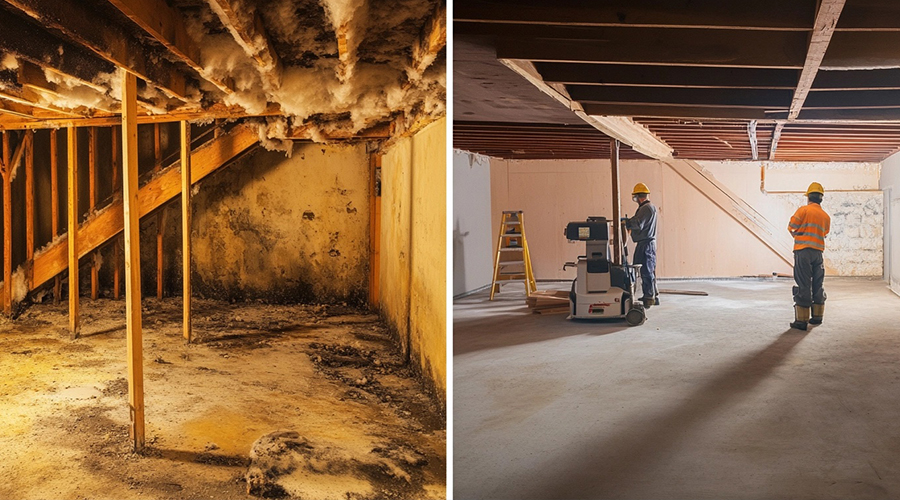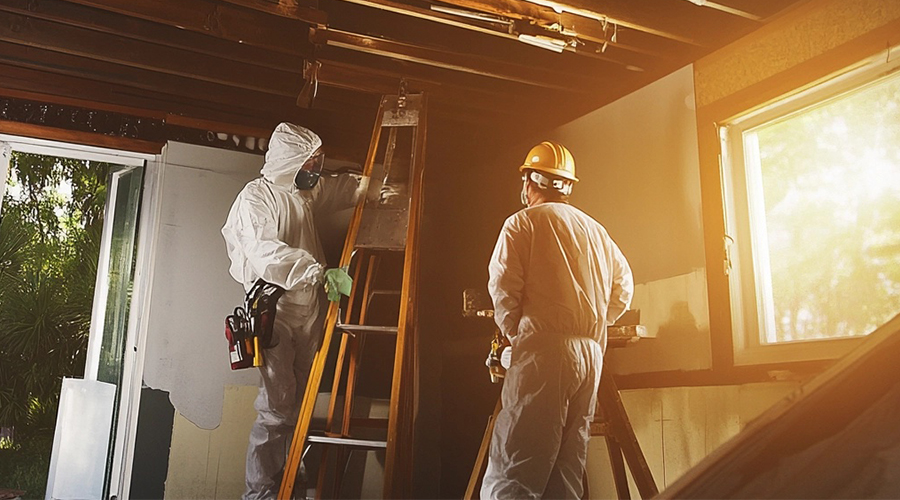Safe Home, Safe Future: Essential Steps in Professional Asbestos Removal
Asbestos is a hazardous material that can cause serious health issues if not handled properly. It’s found in many older homes and buildings, making it crucial to understand the risks associated with asbestos and how asbestos abatement services can protect both your property and its occupants. In this blog, we’ll explore what asbestos is, why it’s dangerous, and the significance of professional asbestos abatement for maintaining a safe environment.
What is Asbestos and Why is it Dangerous?
Asbestos is a naturally occurring mineral that was widely used in construction materials until the 1980s, valued for its fire resistance and insulating properties. It was commonly used in roofing, insulation, tiles, and other building materials. However, as time passed, the severe health risks associated with asbestos exposure became evident.
When asbestos-containing materials are disturbed, they release fibers into the air. These fibers can be inhaled and lodged in the lungs, potentially leading to serious health issues such as lung cancer, asbestosis, and mesothelioma—a rare but aggressive cancer affecting the lining of the lungs. With latency periods ranging from 10 to 50 years, asbestos exposure is particularly dangerous because symptoms often appear long after initial contact.
Health Hazards of Asbestos Exposure
The health hazards posed by asbestos are severe and well-documented. Here are the main risks associated with asbestos exposure:
- Mesothelioma: A rare, aggressive cancer almost exclusively caused by asbestos exposure. It mainly affects the lung lining but can also impact the heart and abdomen.
- Asbestosis: A chronic lung condition caused by prolonged asbestos exposure, leading to lung tissue scarring and difficulty breathing.
- Lung Cancer: Long-term exposure to asbestos significantly increases the risk of lung cancer, especially in smokers.
- Pleural Thickening: Asbestos exposure can cause the lining of the lungs to thicken, leading to discomfort and restricted lung function.
Given these serious risks, it’s essential to ensure that asbestos is properly managed and removed to protect anyone who may be exposed.
Understanding OSHA Regulations and Asbestos Abatement Requirements
Even if you’re working on a private single-family home, asbestos abatement is regulated by OSHA (Occupational Safety and Health Administration) to ensure safety. Unlike EPA regulations, which may exempt single-family homes from certain asbestos requirements, OSHA standards apply to all construction sites—including work on private homes. Employers and contractors are required to identify, manage, and safely handle asbestos at all project sites, regardless of project size or whether it involves contracted labor.
Here are key responsibilities of employers when handling asbestos on any job site:
- Identification of Asbestos Materials: Employers must identify and label asbestos-containing materials (ACMs).
- Training and Equipment: Workers need protective equipment, specific training, and respiratory protection if they’ll be exposed to asbestos.
- Regulatory Compliance: OSHA mandates that contractors use specific protective clothing, work area controls, and waste disposal methods to prevent asbestos exposure.
- Medical Monitoring: Regular health monitoring is required for workers exposed to asbestos.
It’s also important to note that many states require a special license to perform asbestos abatement on single-family homes, even if federal exemptions apply. Always ensure that your contractor is licensed and trained in asbestos handling.
What is Asbestos Abatement?
Asbestos abatement involves removing or reducing the risk of asbestos exposure within a building. Whether it’s a residential home, commercial property, or industrial site, asbestos abatement is crucial to prevent exposure and ensure occupant safety.
There are two main types of asbestos abatement:
- Asbestos Encapsulation: A protective layer is applied to ACMs, preventing fibers from becoming airborne. This method is used when removing the material may be hazardous or too costly.
- Asbestos Removal: The complete removal of ACMs from a building, typically the preferred method during major renovations or demolitions to provide a safer environment for future occupants.
Why Professional Asbestos Abatement is Essential
Asbestos abatement is not a DIY job or something for a general contractor. Handling asbestos requires specialized equipment, protective gear, and expertise to prevent airborne fiber release. Federal, state, and local regulations govern asbestos handling, and failure to comply can result in hefty fines or legal consequences.
Hiring a licensed professional, like AF Environmental, ensures proper safety protocols are followed, and your property remains free from hazardous asbestos fibers. Our team is fully trained to adhere to OSHA regulations, providing a thorough and safe asbestos abatement service.
How to Know if Your Property Contains Asbestos
If your home or building was constructed before the 1980s, it may contain asbestos in various materials, such as:
- Roofing and Siding: Asbestos was commonly used due to its fire-resistant properties.
- Floor Tiles: Vinyl floor tiles, especially pre-1980 installations, may contain asbestos.
- Insulation: Asbestos was widely used for insulation in homes and industrial buildings.
- Pipe Wrapping: Asbestos-containing materials were used to insulate pipes.
The safest way to determine if your property has asbestos is through a professional inspection and asbestos testing. A licensed inspector can collect samples and provide lab analysis to confirm the presence of asbestos, along with a detailed abatement plan if necessary.
The Asbestos Abatement Process
At AF Environmental, our asbestos abatement process is designed to minimize risk and ensure safety. Here’s what you can expect:
- Inspection and Testing: A thorough inspection and sample testing to locate asbestos in your property.
- Abatement Plan: Development of a customized plan for the safest, most effective abatement method.
- Containment and Removal: The affected area is sealed to prevent airborne fibers, and specialized equipment is used to safely remove or encapsulate the asbestos materials.
- Final Inspection and Air Testing: A final inspection and air quality test to ensure that no asbestos fibers remain, ensuring a safe environment.
Why Choose AF Environmental for Asbestos Abatement?
With years of experience in asbestos abatement, AF Environmental prioritizes safety, compliance, and efficiency. Our team is fully licensed, insured, and trained to follow all regulatory guidelines, ensuring that your property is asbestos-free and compliant with OSHA standards. Trust us to handle your asbestos concerns and protect your health and property.



